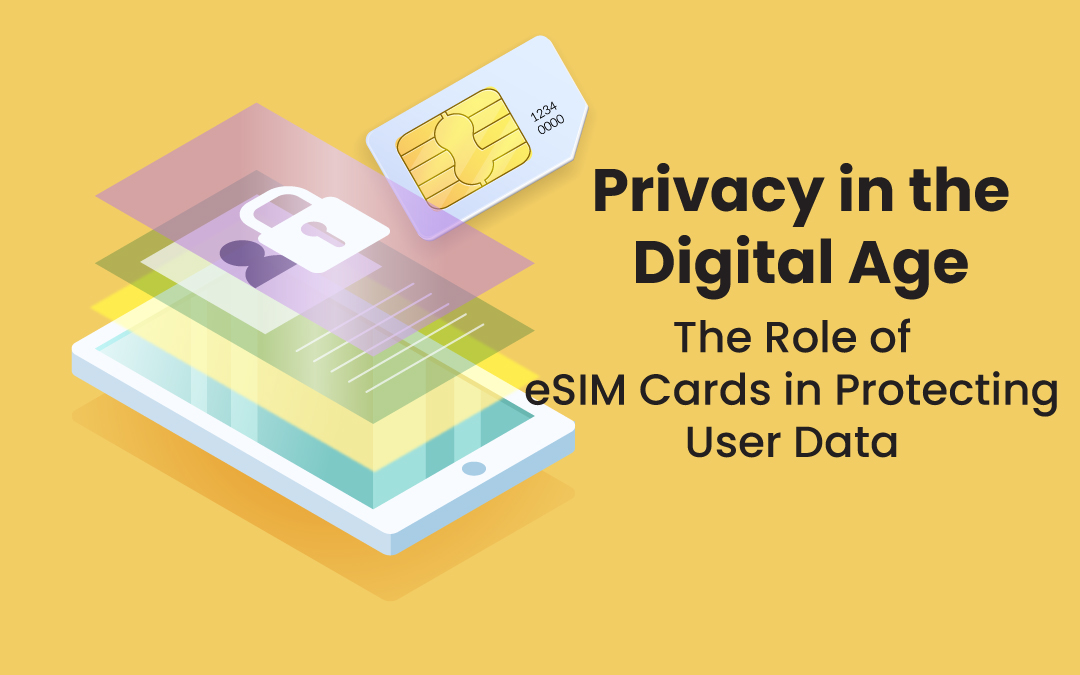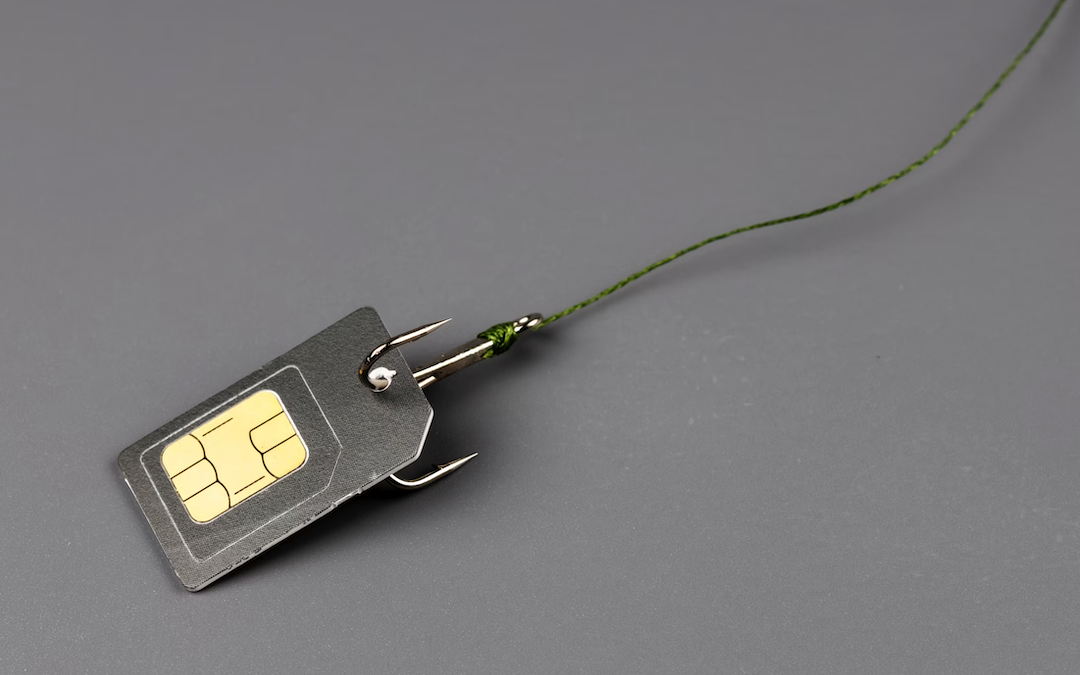
The use of eSIM cards is a saving grace for many international travelers and digital nomads. It allows people to change their SIM card without having to physically replace it. This allows you to seamlessly switch between different platforms without undergoing too much effort.
This is not just more convenient, it also has a positive impact on your overall cybersecurity and protection of your own data.
How?
Well, here are a few ways in which eSIM cards can keep you safer in the hostile digital environment of the 21st century.
1. Safer form of 2FA
The concept of 2FA (two-factor authentication) is a cornerstone of modern cybersecurity. It involves a scenario where, after entering your password, you are asked to confirm your identity using an additional method. Most commonly, this involves entering a code received via email or SMS. In other words, you must provide the platform with a phone number linked to your SIM card.
With an eSIM, which often comes with dual SIM capabilities, you can access multiple numbers simultaneously. This added flexibility allows you to manage personal and business contacts more easily or even switch between different networks without needing to swap physical SIM cards.
Just think about it: every cybersecurity guide recommends that you come up with a unique password for every platform that you use; however, you’re expected to use the same phone number as verification for each of them. It just doesn’t sound right.
With an eSIM, you can change your SIM card in a few clicks, allowing you to use an additional number for your 2FA verification. The increase in cybersecurity that you obtain this way is exponential.
You get more SIM cards and more numbers to choose from when registering for 2FA, not to mention the amount of money you can save by using eSIM instead of buying physical cards for this purpose.
Also, keep in mind that every time you take your SIM card out, you’re increasing the chance that it will be stolen or lost. This compromises your 2FA since someone now has a physical card. With 2FA, it’s near-impossible for anyone to get their hands on the card.
2. Digital only
Physical cards can be cloned. This is a serious problem, but for it to work, a person would have to obtain a physical SIM card, use a SIM card reader, and create a clone. Then, they could exploit the clone in order to make calls, send messages, and access the internet.
This way, they could commit cybercrimes that could be traced back to your SIM card or send malicious links to your friends. From their perspective, it would seem like it’s you who’s sending messages, and the more they trust you (and the more they interact with you), the higher the likelihood that they’ll actually click on the link.
Seeing as how eSIM cards have no physical copy that they can take from your phone, there’s nothing for them to duplicate. This makes cloning more difficult.
The very process of phone number porting has a far higher level of cybersecurity and would require device-level authentication. In other words, they can’t just steal the card; they would have to get their hands on the device itself.
The lack of a physical card also makes it substantially harder for hackers to get unauthorized access to your mobile network. This increases your overall cybersecurity in more ways than you think.
One threat you’re also much safer from this way is SIM swapping. This is when a fraudster convinces your carrier to switch your number to their SIM. With eSIM, there are more authentication instances, which keep you extra secure.
3. Better control over personal data
First of all, cybersecurity is not just about cybersecurity threats. It’s also about your control over your own online presence. With eSIM, you’ll get a chance to have multiple profiles that are tied to your SIM number on a single device. This allows you to manage all your personal contacts and communications, some of which may be tied to your SIM number.
Also, it’s important that you understand that switching numbers may be important for privacy reasons. You see, travelers often visit countries that are notorious for their level of cybercrime. In these areas, hackers are mingling with the general population, hunting for your financial information, your IP address, and even your SIM card. There’s no telling what they can do if they get a hold of it.
Also, remember that your private number may be tied to your banking app, as well as your private Viber account. This is the last number you want compromised.
While abroad, with the use of eSIM, you’ll have a much easier job switching numbers and making it easier and faster. This will allow you to address any cybersecurity concerns and take proactive steps to prevent a major problem.
Another great benefit of this is the fact that it allows you to keep your business and personal numbers separate even without having a dual-sim phone and even without having to swap cards. A lot of people already have separate Google accounts, privately and professionally, so why not take this a step further.

4. eSIMs are more convenient
You should never underestimate the human factor in cybersecurity or, to be more precise, the factor of human laziness.
- Why do people use the same password for every account?
- Why do people just use their birthday as a password?
- Why don’t people hover over links before clicking on them?
The answer is that it takes time and effort, and people are trying to skip this as much as they can.
In previous sections, we’ve already described why it’s important to use different numbers for different platform authentications, as well as why this would be a good idea for keeping personal and business issues separate. However, not many people are going to do it if it requires something as effort-intensive as replacing their SIM card every single time.
How do you think people solve the password issues (unique and random passwords)? Well, most of them don’t actually make an extra effort. Instead, they just start using a password manager. It’s a simpler software solution to their problem.
The same principle applies to eSIM cards.
Instead of disciplining yourself actually to manage and replace all these cards, you can just get yourself an eSIM solution. This way, you’re always just a couple of clicks away from being able to solve your problem.
Just like password managers simplify managing passwords, eSIMs don’t change the cybersecurity game—they just make it easier to stay secure. They make doing the right thing (the smart thing) simpler and less time-consuming, ultimately helping you manage your cybersecurity more effectively.
5. Great for international travel
International travel can be complicated, but having an eSIM can significantly simplify the experience.
Let’s face it: while an eSIM is undoubtedly a huge boost to your cybersecurity (for reasons we’ve already listed), in reality, most people use it just to avoid roaming. People use a local SIM (eSIM) in order to bypass having to pay extra to use the local internet.
You see, since your own mobile service provider doesn’t have a presence abroad (they don’t have infrastructure), they have to buy internet service from local providers and resell it to you. They still want to make a profit, so they pass down the cost to the end consumer. This is roaming, and that’s why it’s so expensive.
While you may fear that hackers will steal your data, the reality is that protecting yourself from roaming costs is just as important.
Now, most people understand the dangers of public and unverified Wi-Fi, which is why they prefer to use their mobile data internet instead. However, they won’t do it if it means paying so much more (and roaming can be incredibly expensive). This means that if you don’t use local SIM or eSIM, you might find yourself more tempted to use unverified public networks.
This is one scenario in which the use of eSIM passively protects you from various cybersecurity threats.
As we’ve previously already mentioned, using eSIM variants also allows you to keep your primary number private in high-risk areas.
The use of eSIM cards elevates your cybersecurity and makes it more convenient
A SIM card is inherently personal and secure, which is why it’s commonly used as a 2FA method. The eSIM technology enhances this security by making it easier to switch between SIM cards while maintaining robust protection. As demonstrated, eSIMs provide both passive and active security benefits. It’s a valuable opportunity for anyone looking to improve their cybersecurity.
Share this post
Leave a comment
All comments are moderated. Spammy and bot submitted comments are deleted. Please submit the comments that are helpful to others, and we'll approve your comments. A comment that includes outbound link will only be approved if the content is relevant to the topic, and has some value to our readers.

Comments (0)
No comment